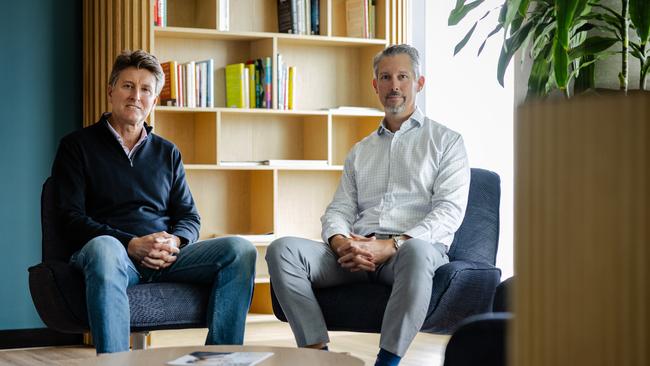Would you travel over an AI-designed bridge? You probably already have as top construction firms embrace the technology
AI is allowing construction firms to see connections in data that might not be visible to humans, allowing them to design better bridges and other projects, while containing cost blowouts.

Engineering firms John Holland and GHD are using artificial intelligence programs to help contain construction cost blowouts and adopt smarter design practices on big building projects.
It is the latest example of how the much-hyped technology is transforming business across the economy, particularly in the construction industry, which has lagged behind others including finance and professional services.
John Holland – the company behind major projects including Sydney Football Stadium and Melbourne’s West Gate Tunnel – the technology is transforming their operations from tender to design and construction.
Chief digital and information officer Bastian Uber AI wasn’t set to replace humans but was assisting engineers to help contain inflation and curb carbon emissions.
“We can say ‘design me this bridge, give me 50 different derivatives of what this bridge can look like but take out 5 per cent less concrete compared to when we last built a bridge of similar size, scale and structural integrity’,” Mr Uber said.
“That’s really exciting to see where we can take the technology … to ultimately drive down the carbon footprint and obviously cost.
“(But) we’re very clear, our people are our biggest asset. So this technology really is about augmenting them and making them more efficient. We developed our standards around the use of AI in John Holland. And the first two are we don’t put our own data into public instances of this type of technology. The second one is the human is responsible for the output of the technology. That is paramount.”
GHD, headquartered in Melbourne, has adopted a similar approach. It encouraged a “free exploration of AI”, allowing staff to be more comfortable with the technology’s natural language interaction rather than being bogged down by traditional training methods.
Unlike other tech systems, generative AI requires little formal training, allowing employees to perform a range of tasks via simple prompts in plain English rather than complex computer code.
So far, about one-third of GHD staff say AI is saving them about 30 minutes a day, while an additional 12 per cent says it is saving them more than an hour.

Chief information officer Paul Murphy said during a project tender phase it has delivered substantial savings.
“Some of our participants in that process … are talking about immediate reductions in their effort of taking the initial read through of RFPs (request for proposal) and requirements, assessment ect, taking that from two to three hours per person to a 15 Minute exercise,” Mr Murphy said.
“That’s material but more broadly, we’re talking, organisationally, of savings of 20 to 30 per cent. That’s the sort of ambition that we’ve got.”
GHD and John Holland have used Microsoft’s AI Copilot platform, which has been incorporated into the tech giant’s suite of products, including Word, Excel and Outlook. Microsoft has also allowed companies to build their own AI chatbots, rather than use publicly available systems.
Mr Murphy said this has resulted in time savings that are more difficult to define, given it can screen copious amounts of data and extract connections that “are not totally visible to us”.
“What this type of technology does is gives us an assistant to work with the human brain, to augment the human brain.
“So even though the data might have already been there, the ability to see some of those connections and for the AI to facilitate those connections for us is that next step. A really great example from our neck of the woods is work that we’ve been doing with a number of road authorities looking at road safety data, and correlating road safety data with vehicle instrumentation to actually determine with greater confidence, what’s happening between the geometry of the road and the vehicle that is resulting in traffic accidents.
“We actually prioritise safety remediation in a different way to the way that we’ve historically been doing. We’re using telemetry and accident data and geometry to form that nexus around where road safety, maintenance or upgrades should occur.”
It comes after a McKinsey report found in 2016 that construction was the second least digitised industry above agriculture. A Deloitte report last year found little had changed, finding that just 26 per cent of construction and engineering businesses in Australia, Japan and Singapore had adopted AI and machine learning.




To join the conversation, please log in. Don't have an account? Register
Join the conversation, you are commenting as Logout